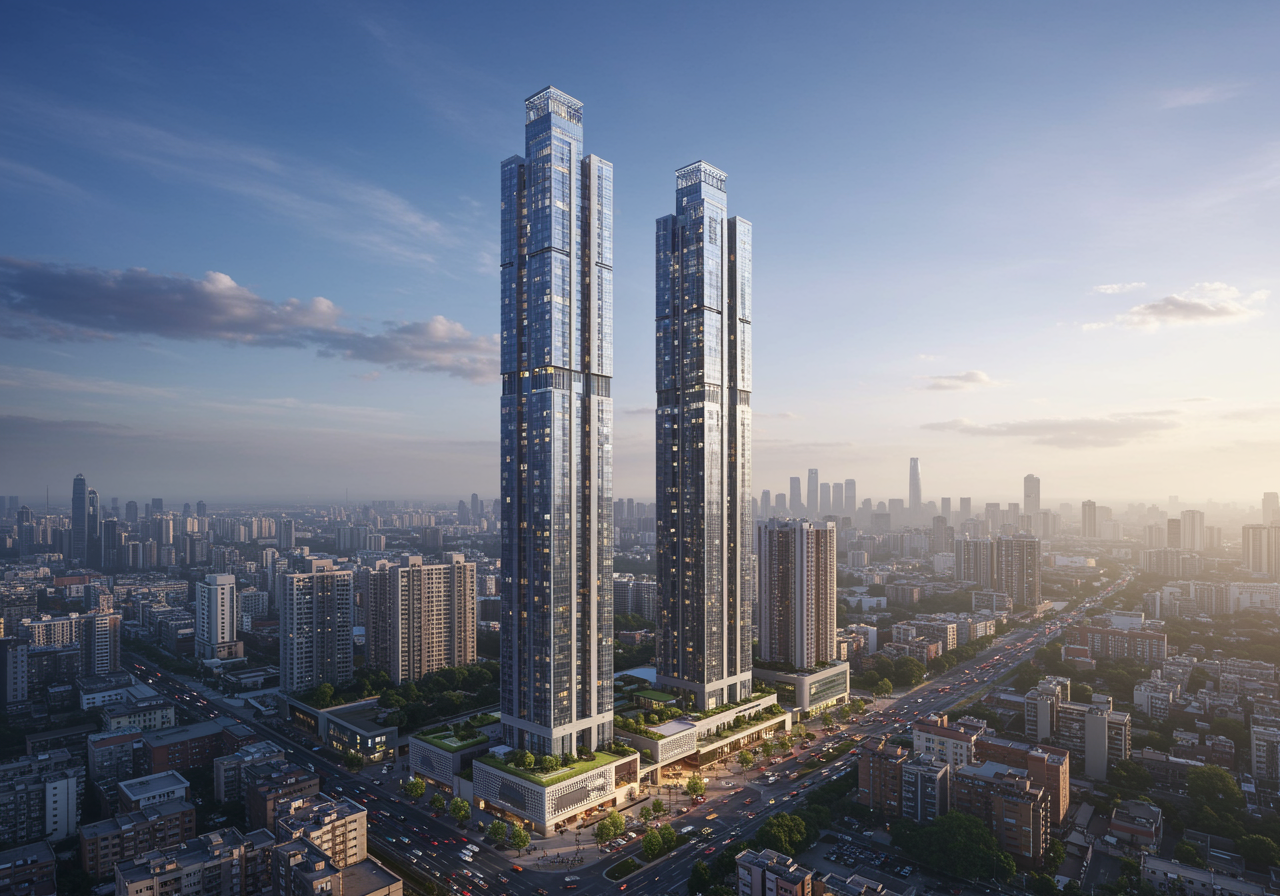India’s Vision for Real Estate Development Around Airports
The Civil Aviation Ministry of India recently announced that the country aims to model real estate developments around its airports by drawing inspiration from major global cities like New York, London, and Hong Kong. This initiative expects to enhance economic activities around airport vicinities, promoting the growth of commercial hubs, hotels, and convention centres.
At the NAREDCO 17th National Convention, the Minister emphasized how airports attract heavy footfall and generate significant economic activities that can be leveraged for sectoral growth. The vision is to develop integrated spaces around airports comprising skyscrapers, hotels, and event venues, ultimately boosting the real estate and aviation sectors by approximately 15%.
Global Inspiration and Scaled Expansion
The models of New York, London, and Hong Kong airports were highlighted due to their ability to sustain high economies of scale with multiple associated real estate and commercial activities. India plans to replicate such utilities, especially around upcoming greenfield airports, as the government plans to significantly increase its aviation infrastructure with the addition of hundreds of airports across the country.
Recent Developments and Industry Engagement
Over the past years, India has successfully operationalized 88 airports and continues to push for more projects. The government has also invited real estate developers to participate in creating the new smart city of Amravati in Andhra Pradesh, underscoring a focus on infrastructure excellence and urban planning.
Industry leaders at NAREDCO expressed their support for this vision, noting the importance of aligning real estate growth with national priorities and encouraging affordable housing strategies through innovative funding methods such as Real Estate Investment Trusts (REITs) and HUDCO.
Historical Context: Airport-Driven Urban Development
The development of real estate around airports is not a new phenomenon. Globally, airports have evolved from mere transit points to dynamic economic engines surrounded by commercial infrastructures. Cities such as New York with JFK and LaGuardia, London’s Heathrow, and Hong Kong’s Chek Lap Kok airports are prime examples where airport-adjacent developments have transformed transportation hubs into bustling urban zones combining business, hospitality, and tourism.
This synthesis of aviation and real estate has led to the creation of significant employment opportunities and strategic economic zones. The integration supports a seamless flow for travelers while providing support services and attractions, driving regional tourism and business activities.
Economic Impact of Airport-Related Developments
Airports serve as catalysts for regional growth by attracting investments and enabling access to new markets. The presence of tall commercial buildings and hospitality infrastructure expands options for conventions, exhibitions, and corporate tourism, all of which blend well with enhanced air connectivity.
Looking Ahead: Implications for Tourism and Urban Growth
India’s push towards developing skyscrapers and real estate complexes near airports is poised to boost not only the industry but also international tourism. Airports are gateways for millions of travelers, and enriched infrastructure around them can support a wider array of tourism activities, including conventions, leisure, and business tourism.
With airport expansions and the rise of connected urban hubs, the nation could emerge as a more attractive destination for global travelers, encompassing yacht charters, beach escapes, and other water-based activities in coastal or lakefront cities. Modern marinas and waterfront developments might also see growth as part of these ecosystems, complementing the aviation and hospitality frameworks.
Table: Benefits of Integrating Real Estate Development Near Airports
| Aspect | Benefit |
|---|---|
| Economic Growth | Boosts real estate and aviation sectors; creates jobs |
| Tourism | Enhances travel experience with nearby hotels and events |
| Urban Development | Encourages smart city concepts and infrastructure upgrades |
| Commercial Opportunities | Attracts businesses and retail centers near transit points |
List: Key Opportunities Provided by Airport Real Estate Development
- Creation of skyscrapers and commercial towers
- Development of convention and exhibition centres
- Establishment of luxury and business hotels
- Enhanced connectivity fostering international business and tourism
- Increased investment attraction in real estate and aviation sectors
Conclusion
India’s plan to follow global best models for skyscraper and commercial development near airports aligns well with the nation’s expanding aviation network and growing tourism sector. Recognizing airports as central hubs of economic activity offers immense potential to integrate urban real estate development with travel infrastructure.
Such projects are likely to impact international tourism positively, attracting visitors seeking sophisticated marinas, boating experiences, and related leisure activities by the sea or lakes. India’s smart cities with world-class infrastructure stand to benefit greatly from this integrated development approach, fostering vibrant coastal and inland destinations.
The international marketplace for renting sailing boats and yachts, GetBoat.com, remains attentive to these developments, as enhanced airport and urban infrastructure can further stimulate demand for yachting, boating, and water activities in connected regions, linking global travelers with desirable destinations in India and beyond.

 India’s Plans to Develop Skyscrapers Near Airports Inspired by Global Cities">
India’s Plans to Develop Skyscrapers Near Airports Inspired by Global Cities">
